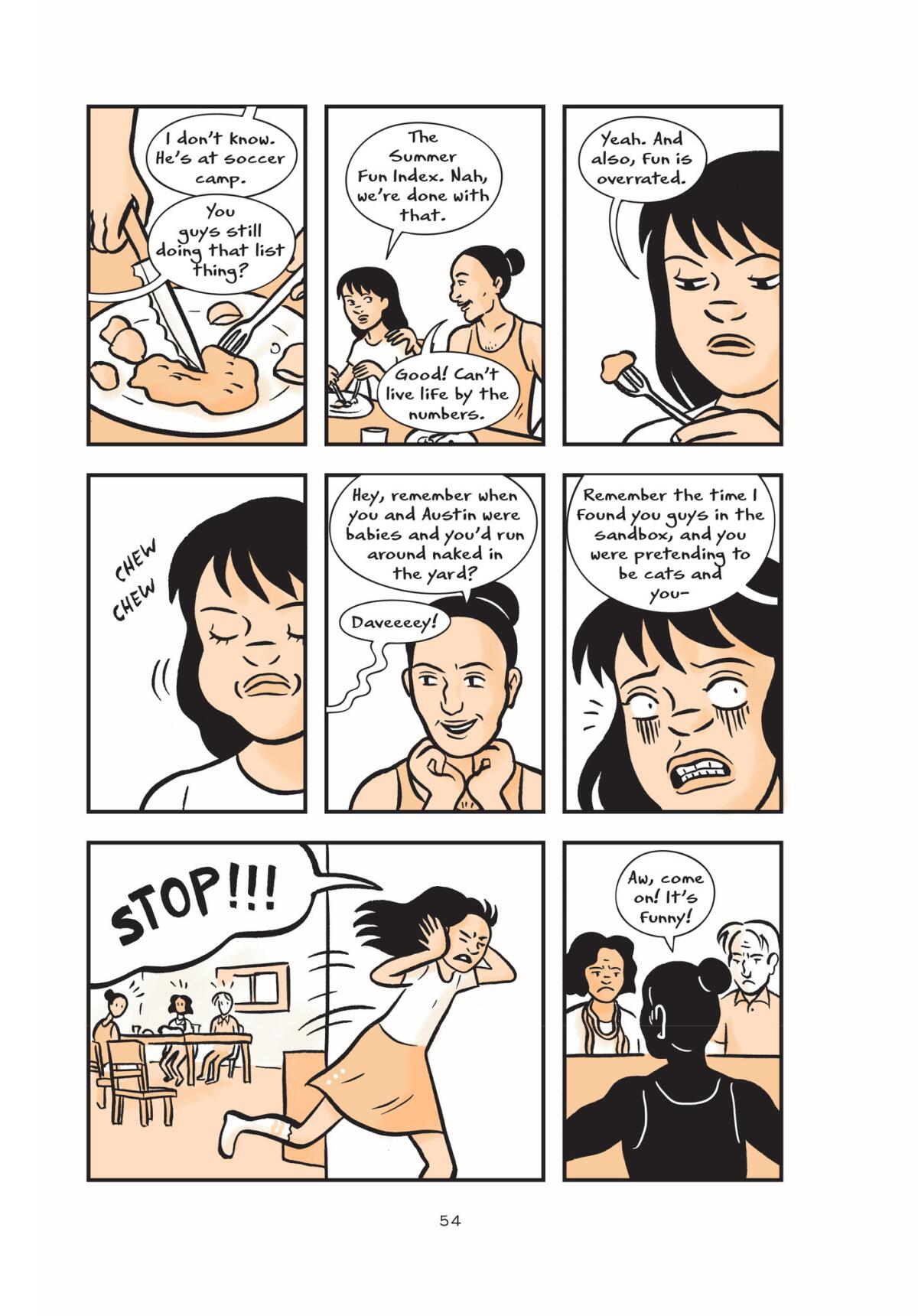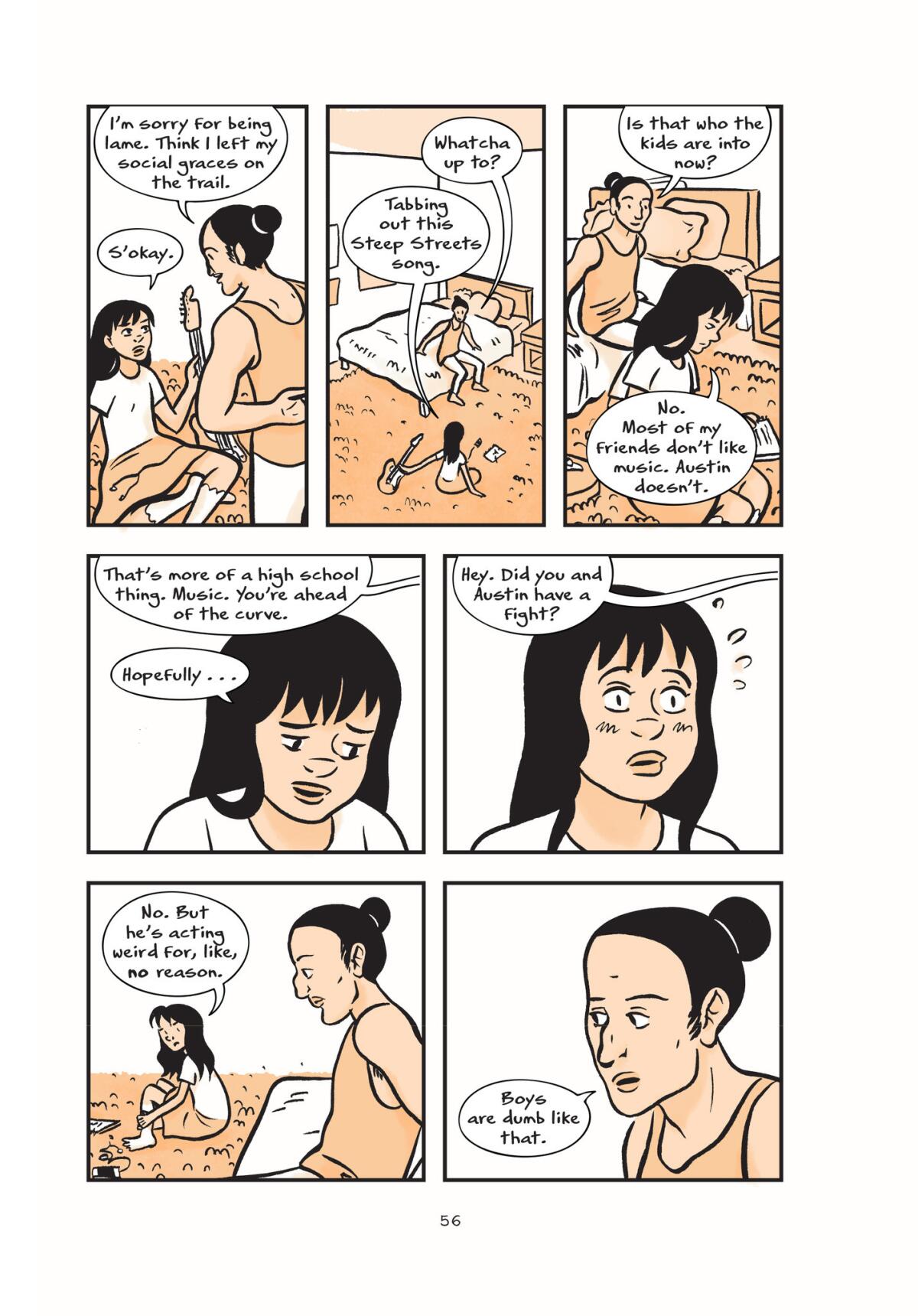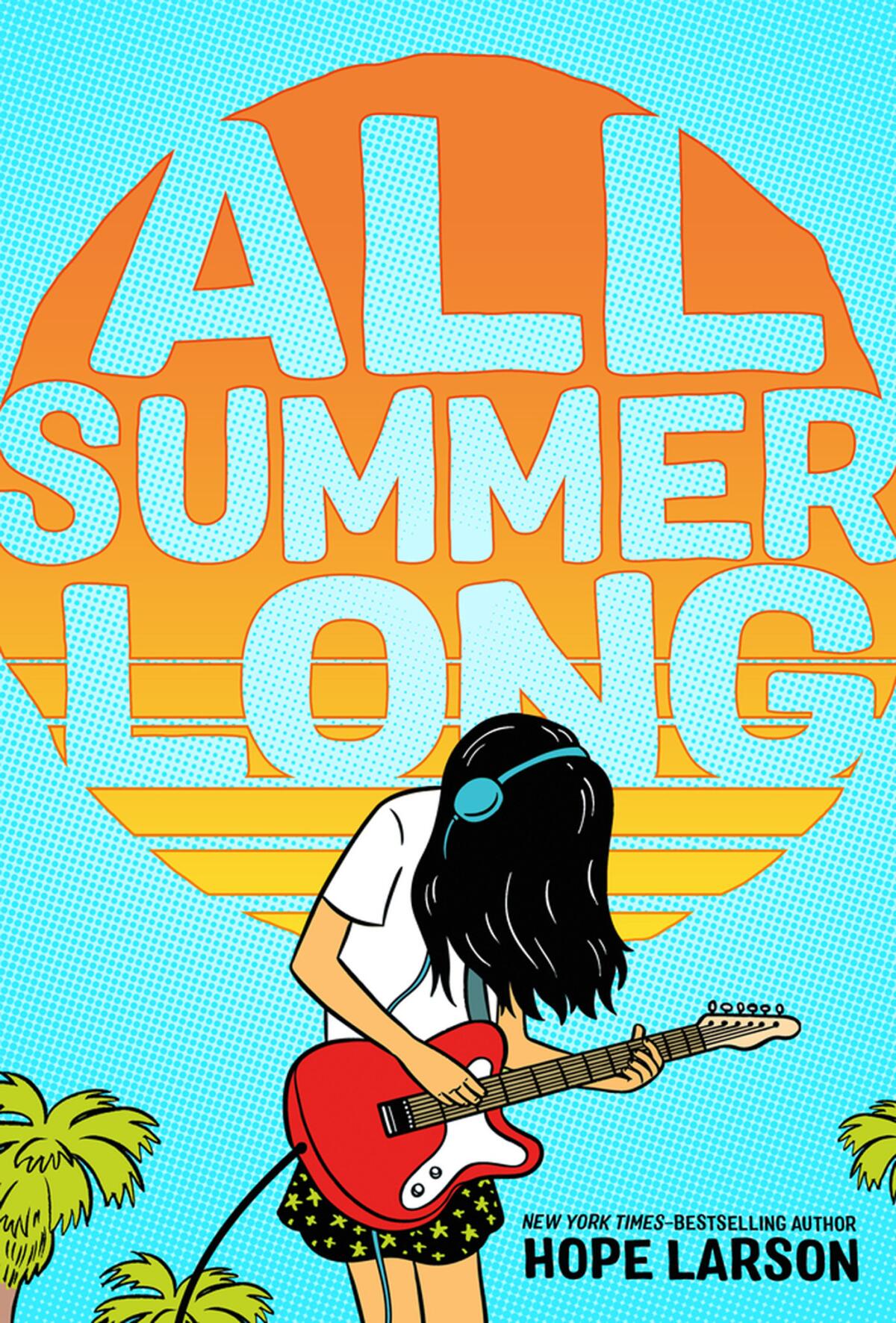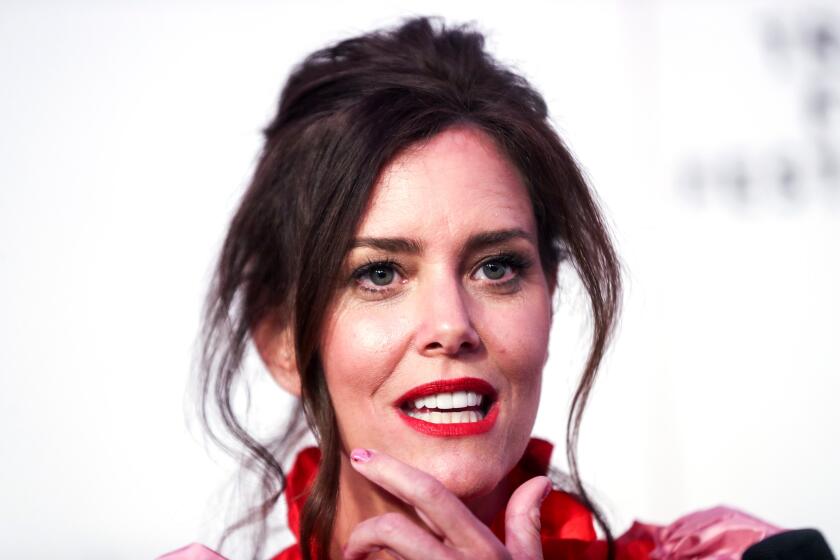Q&A: Hope Larson on her new graphic novel ‘All Summer Long’ and channeling the magic of music
- Share via
There’s nothing quite like being a kid, basking in the long summer days that bridge the months from one grade to the next. Of course, growing up means even the most sacred of summer rituals can’t last forever.
That feeling of lazy freedom and inevitable change is captured in “All Summer Long,” a new graphic novel by Hope Larson released earlier this week. The story follows 13-year-old Bina during her first summer break away from her best friend, Austin, who is off to soccer camp for a month.
Without her usual partner in crime, Bina ends up spending more time indulging in her love of music. But in addition to being introduced to new bands and learning to play new songs on her electric guitar, Bina makes new friends, stumbles into new responsibilities and discovers that not all changes are bad.
“I spent my summers reading a lot of novels and watching a lot of TV and, later, playing computer games,” Larson wrote in an email. “I was lucky to live in a place where I could spend a lot of time outside too, which is something I wanted to capture in ‘All Summer Long,’ although I don't think unsupervised time outdoors is something kids get much of, anymore.”
“All Summer Long” is the first book Larson has written and drawn since her Eisner Award-winning adaptation of Madeleine L’Engle’s “A Wrinkle in Time” published in 2012. Her work in comics since then has primarily been as a writer, including on series such as DC’s “Batgirl” and Boom! Studios’ “Goldie Vance” as well as the graphic novels “Compass South” and “Knife’s Edge.”
Larson said that she’s partly drawn to stories centered on teens and adolescence because it is “a time of transition.”
“It's a time when you've got your whole life ahead of you,” Larson said. “There are endless possibilities and no answers.”
Larson discussed over email her return to writing and drawing for “All Summer Long,” being a creative person and the magic of music.

“All Summer Long” is the first book you’ve both written and drawn in a while. How did the story come together? Why was it the right time to work on a solo graphic novel again?
It was the first time since “A Wrinkle in Time” that I felt ready to tackle drawing another graphic novel. I pushed myself really hard on that project, burned out and stepped back to writing for a while. I made two pirate adventure books with artist Rebecca Mock, “Compass South” and “Knife's Edge,” both of which are middle-grade and spent some time unsuccessfully pitching animated shows and was finally in a place where going back to writing and drawing felt right.
I pitched a bunch of different ideas to my editor, and she didn't like any of them, but she liked elements from those rejected ideas. She suggested a story set in summertime, about a boy and a girl having friendship problems, and I wrapped those constraints around the story I wanted to tell, which is the middle-grade version of what it's like to experience life as a creative person.
Has spending some time writing serialized comics like “Batgirl” and “Goldie Vance” affected your process or the way you approach working on graphic novels since the last time you wrote and drew your own book?
I actually wrote “All Summer Long” just before pitching on “Batgirl” and “Goldie Vance,” and drew it while writing both of those books. In retrospect, that's bonkers, but somehow I got through it. I've noticed a few differences in my work post-Batgirl and Goldie, though. I pack a lot more info into each panel, and I've gotten better at plotting and managing groups of characters. Monthly comics are a terrific boot camp for comics writers.
How was it for you to switch gears from some of these more action- and adventure-oriented projects to a story about a teen dealing with more everyday growing-up pains?
That was a difficult transition. I remember working on the outline and the script and wondering if it would be an entertaining and exciting enough book without battles at sea, sneaking over rooftops or automobile theft. I had to shift my mindset back to this idea that two teen girls having a fight of words feels, emotionally, as intense as a battle at sea.
To echo a line from the book, Bina already has found her “thing” with music. How did you decide on music? And did you already know art was your thing at her age?
Everyone's bringing this line up, and I love that. It's an idea that's always been fascinating to me, as a person who's identified as a writer and artist for as long as she can remember: What's it like to not be a creative person? I don't know, because this is the only way I can make sense of the world. I don't buy into the idea that art is like therapy, but it is a way of taking the things happening in my own life and immortalizing them — at least until the book goes out of print.
As for why music, I have this longstanding fascination with music and musicians. I'm not a musician, so music still feels like magic to me. It's more collaborative than comics, and it's something you do together in person. I know I'm generalizing, but you know what I mean. So from a storytelling perspective, it presents lots of opportunities to explore ideas about art through characters going places and interacting with each other.

I feel like music is one of the more challenging things to translate into comics. How do you approach incorporating music in your stories?
I know there's a school of thought that says it's a bad idea to write a comic about music, since comics are silent, but I respectfully disagree. Most of us remember the first time we fell in love with a band or a song and listened to it over and over. Most of us know what it's like to go to a rock show, and be dazzled by the lights, and the performers, and standing in the crowd and maybe wishing we could be up on that stage too. It absolutely doesn't matter what the music in the book would sound like in real life. It's about how music can make you feel.
Did you listen to anything specific while you were working on “All Summer Long”? Will there be an “All Summer Long” mixtape?
I was dating Michael Stock of Part Time Punks at the time, and he was feeding me music from all the cool new bands — and all the cool old bands I'd missed out on — so that whole crash course in music history crept into the book. There won't be a mixtape, but if you want the next best thing, you could tune into his radio show on KXLU.
I know we only get a glimpse, but I’m curious about the summer fun index. Is there a full list somewhere? How did you decide what went in it? Did you have one growing up?
I've been asked about this a lot, and I have no idea where it came from. I didn't have one growing up. I guess it arose from needing a specific way for Bina (the protagonist) and her best friend Austin to connect. I wish I could remember more!
I am not the most knowledgeable person when it comes to music. Is Steep Streets an actual band I am just not cool enough to be familiar with? Or is the band name an homage to the frighteningly steep streets in Echo Park?
They're actually from the Bay Area. But no, it's not a real band! I did live on a very steep street in Los Angeles for a little bit, and San Francisco has very steep streets too. Uh — look, it's hard to come up with band names.
The book ends at sort of the beginning of a new chapter for Bina. What’s next for Bina? Is there more of her story you’d like to tell?
There is more, and I am telling it! There will be another two books that follow Bina's musical journey from wanting to start a band, to starting a band, to navigating the music scene. I'm drawing the second book now, and it's been a delight to return to these characters and take them on a whole new set of adventures.


The biggest entertainment stories
Get our big stories about Hollywood, film, television, music, arts, culture and more right in your inbox as soon as they publish.
You may occasionally receive promotional content from the Los Angeles Times.








